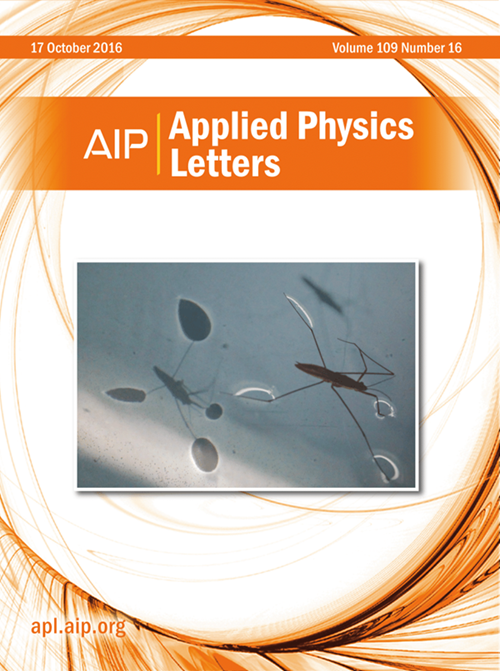Investigating the temperature-dependent electro-optic behaviors in La-doped PMN-PT transparent ceramics
IF 3.5
2区 物理与天体物理
Q2 PHYSICS, APPLIED
引用次数: 0
Abstract
Understanding the temperature-dependent electro-optic behaviors in (1 − x)[Pb(Mg1/3Nb2/3)O3]-x[PbTiO3] [(1 − x)PMN-xPT] is central to its device applications. In this work, 0.5 mol. % La-(1 − x)PMN-xPT transparent ceramics with different solid solution ratios (i.e., x = 0.10, 0.15, 0.20, 0.25) were fabricated to study the temperature-dependent electro-optic behaviors. Two distinct temperature dependencies are revealed: for 0.85PMN-0.15PT and 0.90PMN-0.10PT, the measured electro-optic coefficient decreases with increasing temperature, while for 0.75PMN-0.25PT and 0.80PMN-0.20PT, the electro-optic coefficient first increases and then decreases rapidly with the increase in temperature. Based on the temperature-dependent dielectric, ferroelectricity, x-ray diffraction, and piezoresponse domain image analysis, the ferroelectric–ferroelectric phase transition is suggested to play a dominant role, with the ferroelectric state to relaxor state transition providing an auxiliary enhancement. This study provides valuable insights into understanding temperature-dependent electro-optic behaviors and should be instructive for the design and optimization of advanced electro-optic devices.掺la PMN-PT透明陶瓷的温度依赖性电光行为研究
了解(1−x)[Pb(Mg1/3Nb2/3)O3]-x[PbTiO3][(1−x)PMN-xPT]中温度相关的电光行为是其器件应用的核心。本文制备了不同固溶比(即x = 0.10, 0.15, 0.20, 0.25)的0.5 mol. % La-(1−x)PMN-xPT透明陶瓷,研究其随温度变化的电光行为。结果表明,对于0.85PMN-0.15PT和0.90PMN-0.10PT,测得的电光系数随温度的升高而减小,而对于0.75PMN-0.25PT和0.80PMN-0.20PT,测得的电光系数随温度的升高先增大后迅速减小。基于介电、铁电、x射线衍射和压响应域图像分析,认为铁电-铁电相变起主导作用,铁电态向弛豫态过渡提供辅助增强。该研究为理解温度相关的电光行为提供了有价值的见解,并对先进电光器件的设计和优化具有指导意义。
本文章由计算机程序翻译,如有差异,请以英文原文为准。
求助全文
约1分钟内获得全文
求助全文
来源期刊

Applied Physics Letters
物理-物理:应用
CiteScore
6.40
自引率
10.00%
发文量
1821
审稿时长
1.6 months
期刊介绍:
Applied Physics Letters (APL) features concise, up-to-date reports on significant new findings in applied physics. Emphasizing rapid dissemination of key data and new physical insights, APL offers prompt publication of new experimental and theoretical papers reporting applications of physics phenomena to all branches of science, engineering, and modern technology.
In addition to regular articles, the journal also publishes invited Fast Track, Perspectives, and in-depth Editorials which report on cutting-edge areas in applied physics.
APL Perspectives are forward-looking invited letters which highlight recent developments or discoveries. Emphasis is placed on very recent developments, potentially disruptive technologies, open questions and possible solutions. They also include a mini-roadmap detailing where the community should direct efforts in order for the phenomena to be viable for application and the challenges associated with meeting that performance threshold. Perspectives are characterized by personal viewpoints and opinions of recognized experts in the field.
Fast Track articles are invited original research articles that report results that are particularly novel and important or provide a significant advancement in an emerging field. Because of the urgency and scientific importance of the work, the peer review process is accelerated. If, during the review process, it becomes apparent that the paper does not meet the Fast Track criterion, it is returned to a normal track.
 求助内容:
求助内容: 应助结果提醒方式:
应助结果提醒方式:


